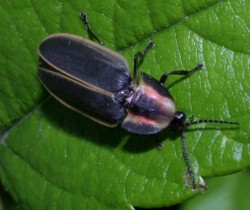
Citizen Paleontologists Are Making History
During the last Ice Age, mammoths and mastodons roamed Florida. Today, fossil hunters like James Kennedy of Vero Beach, Florida find their bones. “I'm not a scientist,” said James in a recent interview for National Public Radio. “I just go out and dig up bones good. I'm good at finding them." But I’d contend that James is a scientist – a citizen scientist. Many people collect fossils. I like to think of these fossil hunters as “citizen paleontologists” and they can play important roles in scientific discovery. For example, one of the bones James collected is more than just a fossil. It’s also prehistoric art. An image of a mammoth is engraved on the bone. Scientists estimate that the engraving was made at least 13,000 years ago. It’s an important clue to how humans lived at the time. Several research projects are combining the skills and interests of citizen paleontologists with those of scientists in order to help us understand more about earth’s history and evolution. Here are a few examples of projects that are getting citizens and researchers working together and leading to scientific discoveries. … Read more
Categories: Animals, Citizen Science, Geology & Earth Sciences, Nature & Outdoors, Science Education Standards






